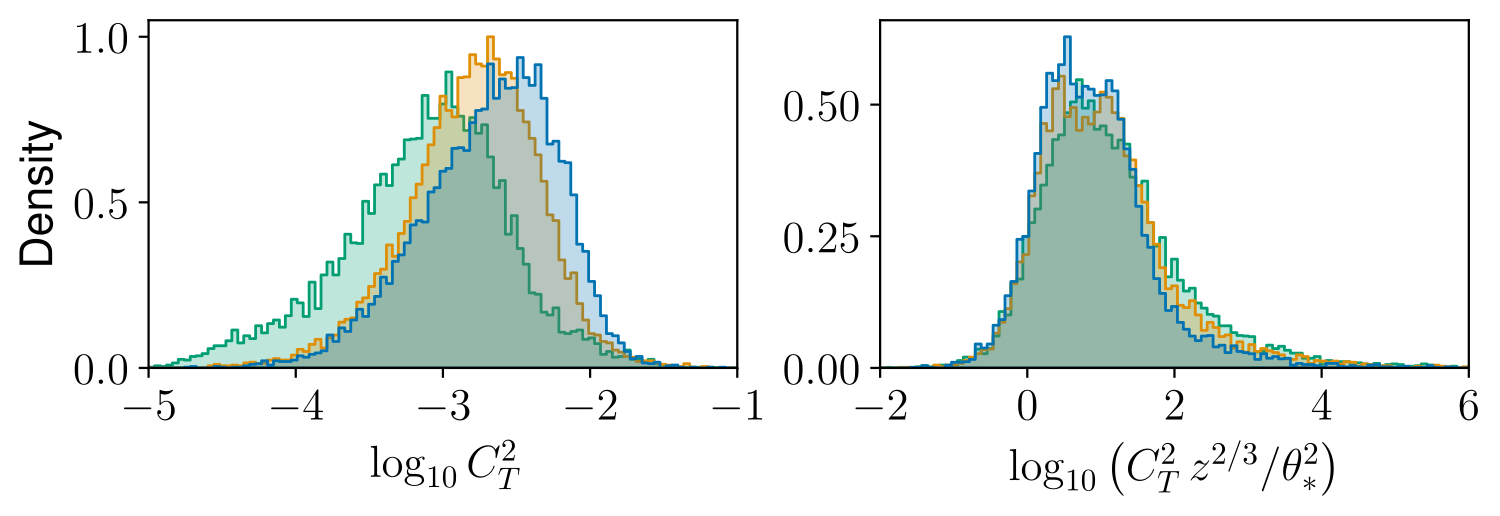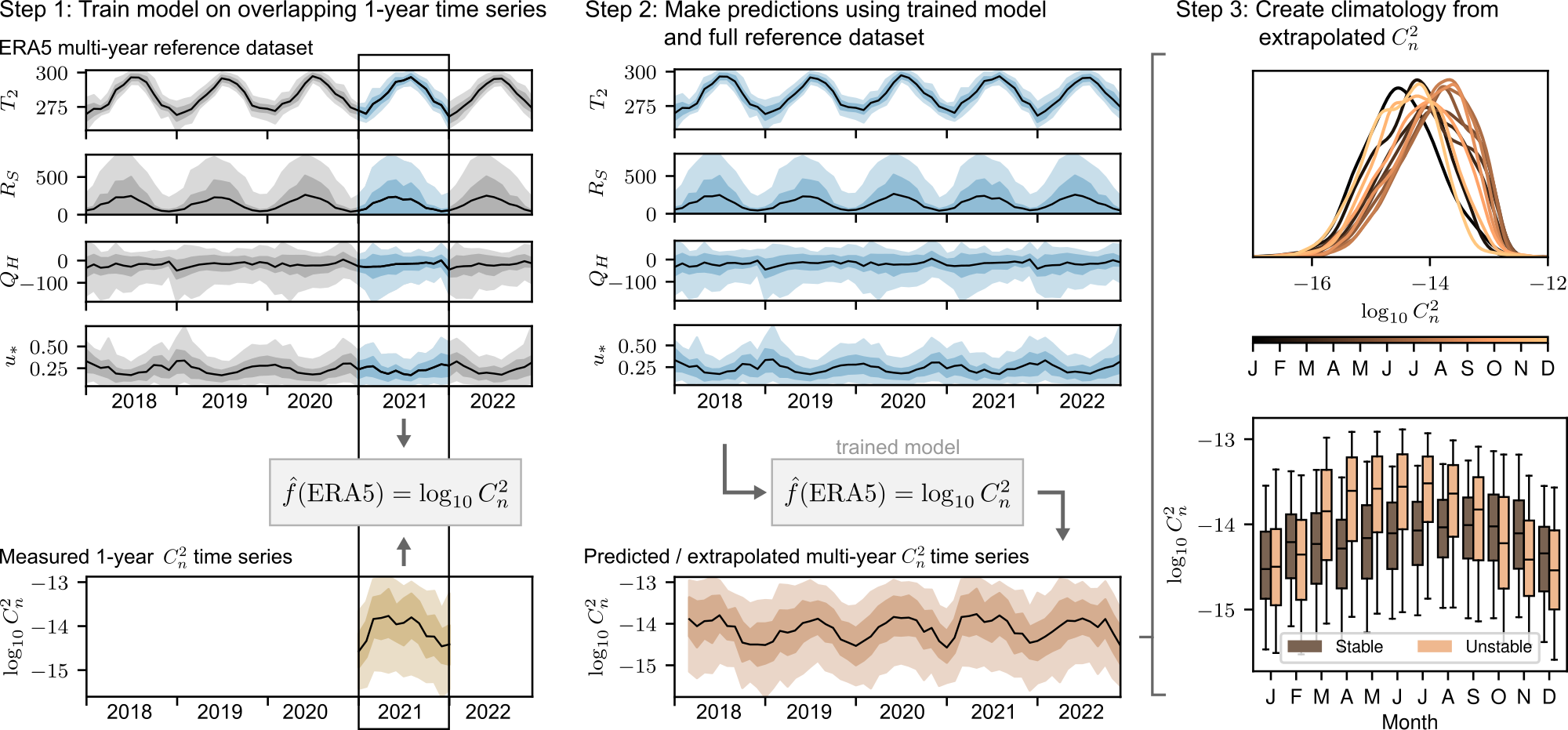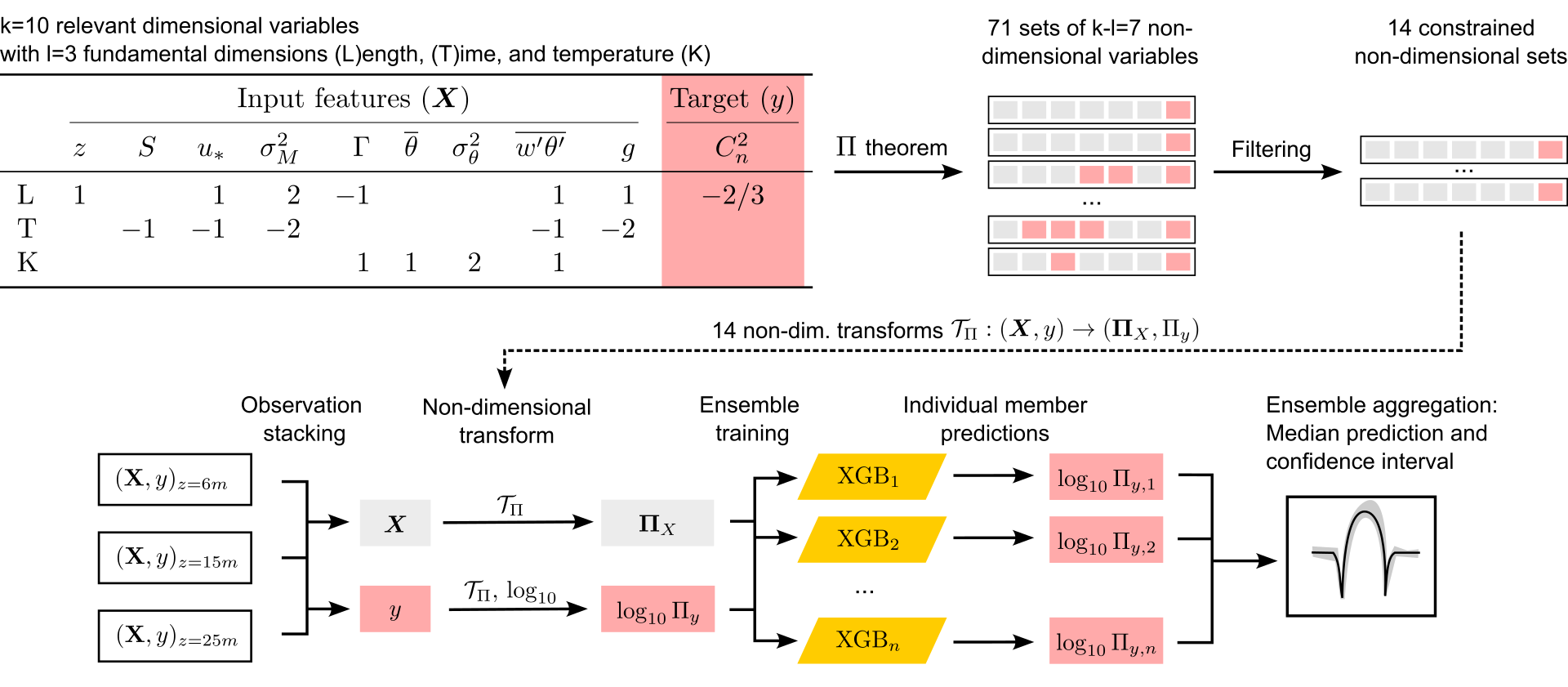I am fascinated by the idea of solving complex physical modeling problems with data-driven techniques. Currently, I am pursuing my PhD research at the Department of Geoscience and Remote Sensing at TU Delft under the guidance of Sukanta Basu and Rudolf Saathof. My research goal is to estimate turbulent fluctuations of the refractive index in the atmosphere – so-called optical turbulence – with machine learning. These fluctuations cause problems in numerous fields, such as astronomy or free-space optical (laser) communication. To overcome these issues, reliable and accurate optical turbulence models are needed.
Tailor-made data-driven similarity theories for the temperature structure parameter $C_T^2$ in the lower atmospheric boundary layer

Optical ground-based astronomy and future free-space optical communication (FSOC) suffer from light getting distorted when it propagates through the turbulent atmosphere. In astronomy, turbulent fluctuations of the atmospheric refractive index, known as optical turbulence (OT), cause blurry images and limit the detection of small objects. FSOC links, which use optical beams to transmit data instead of traditional radio waves, experience reduced data rates or even link interruptions due to laser beams getting distorted by OT. ...


